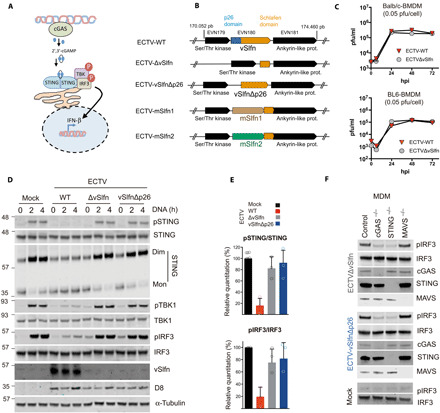Fig. 2. vSlfn inhibits the cGAS-STING axis in ECTV infections.

(A) Schematic representation of the cGAS/cGAMP/STING pathway. Upon DNA recognition, cGAS synthesizes 2′,3′-cGAMP and activates STING, which, in turn, leads to IRF3 nuclear translocation and the expression of cytokine genes such as IFN-β. (B) Genomic organization of vSlfn and surrounding loci. vSlfn (EVN180 in ECTV Naval strain) contains an N-terminal p26 domain (in blue) and an Slfn-like domain (in orange) and is surrounded by a Ser/Thr kinase (EVN179) and an ankyrin-like protein gene (EVN181) shown in black. mSlfn1 and mSlfn2 refer to murine Slfn genes 1 and 2 replacing vSlfn. (C) ECTV growth curves in the presence or absence of vSlfn in bone marrow–derived macrophages (BMDMs) from Balb/c or BL6 mice. BMDMs were infected with 0.05 plaque-forming units (pfu)/cell of ECTV wild type (ECTV-WT) or ECTV lacking vSlfn (ECTV∆vSlfn), and viral titers were determined at indicated times. (D) Infection with ECTV∆vSlfn or ECTV lacking the vSlfn p26–like domain (ECTV-vSlfn∆p26) failed to suppress STING phosphorylation and dimerization as well as TBK1 and IRF3 phosphorylation in response to transfected DNA in monocyte-derived macrophages (MDMs). Cells were infected with 2 pfu/cell of the indicated viruses for 6 hours and subsequently stimulated with exogenous DNA for increasing times, before being analyzed by SDS–polyacrylamide gel electrophoresis (PAGE) for the indicated proteins. D8 is an unrelated ECTV protein used as infection marker. (E) STING and IRF3 phosphorylation levels from three independent experiments performed as above. (F) IRF3 phosphorylation in response to ECTV∆vSlfn or ECTV-vSlfn∆p26 infection required cGAS and STING, but not MAVS. MDMs deficient for the indicated proteins were infected with 5 pfu/cell of the indicated viruses for 6 hours before being analyzed by SDS-PAGE for the indicated proteins. All data are representative of at least three experiments.
